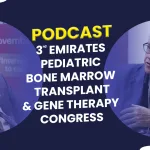Paris- 23 December 2024- Sanofi and SK bioscience have entered into a new chapter of their collaboration in pneumococcal vaccines with an expanded agreement to develop, license and commercialize next-generation PCVs for both pediatric and adult populations, reaffirming their commitment to fighting pneumococcal disease.
Despite decades of public health vaccination programs, invasive pneumococcal disease (IPD) continues to inflict a substantial burden of disease, primarily due to Streptococcus pneumoniae serotypes that are not included in currently available conjugate vaccines. Next-generation PCVs have the potential to extend vaccine coverage of disease-causing serotypes.
This expansion builds on the companies’ existing collaboration to develop and commercialize a PCV21 pediatric vaccine, for which the phase 3 clinical program commenced last week. This vaccine candidate is the first-ever PCV containing more than 20 serotypes to enter a phase 3 clinical study in infants and toddlers.
Also Read: WHO and Lesotho Ministry of Health collaborate to advance national Digital Health Strategy
“Given the vast unmet public health needs in IPD, we’re delighted to expand this collaboration and continue our pursuit of innovative work in PCV. Our collaboration leverages SK bioscience’s capabilities and Sanofi’s expertise in developing and bringing innovative vaccines to people worldwide with the collective aim of reducing the global impact of pneumococcal disease.” Said Thomas Triomphe, Executive Vice President- Vaccines, Sanofi
“We’re thrilled about the expansion of our collaboration with Sanofi, which serves as the core of our strategy to develop new solutions to combat pneumococcal disease. The ongoing expansion of our state-of-the-art manufacturing base, cofinanced by Sanofi, will support launch of PCV21 and future next generation vaccines.” Said Jaeyong Ahn, CEO and President of SK bioscience.
The PCV21 phase 3 program is based on positive phase 2 results communicated last year and will include more than 7,700 infants, toddlers, young children and adolescents across multiple geographies, including the US, Europe, Australia, Asia, and Latin America.



















